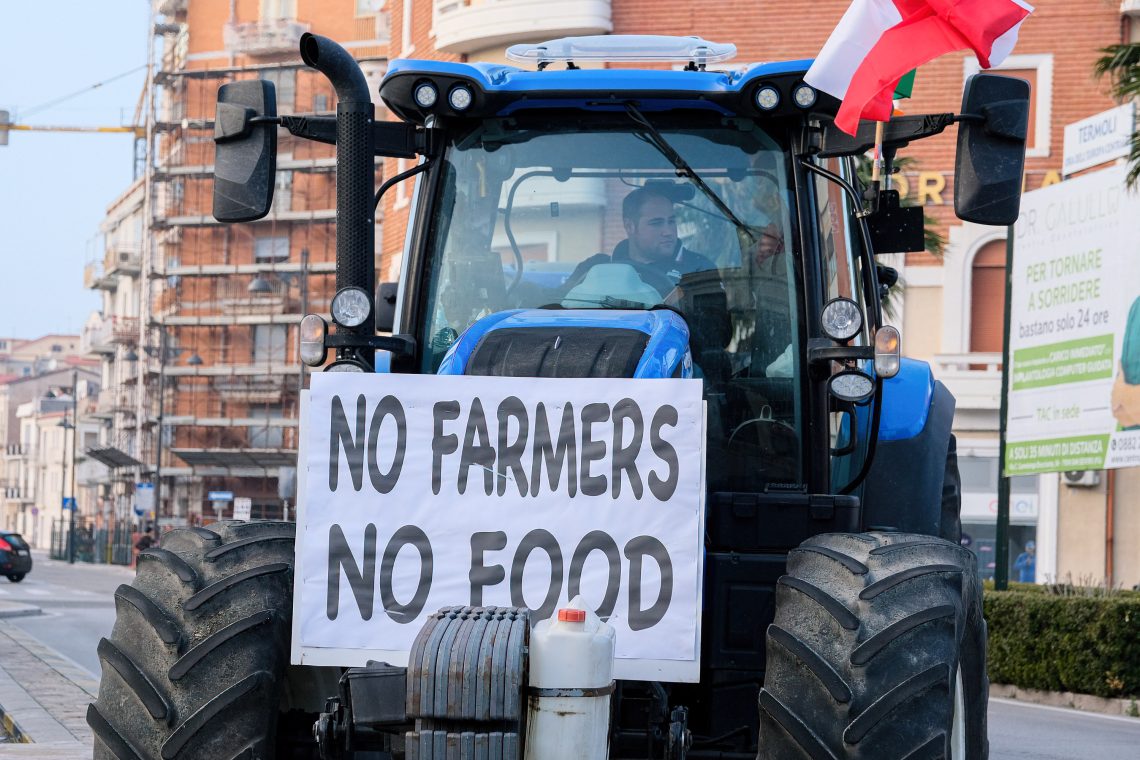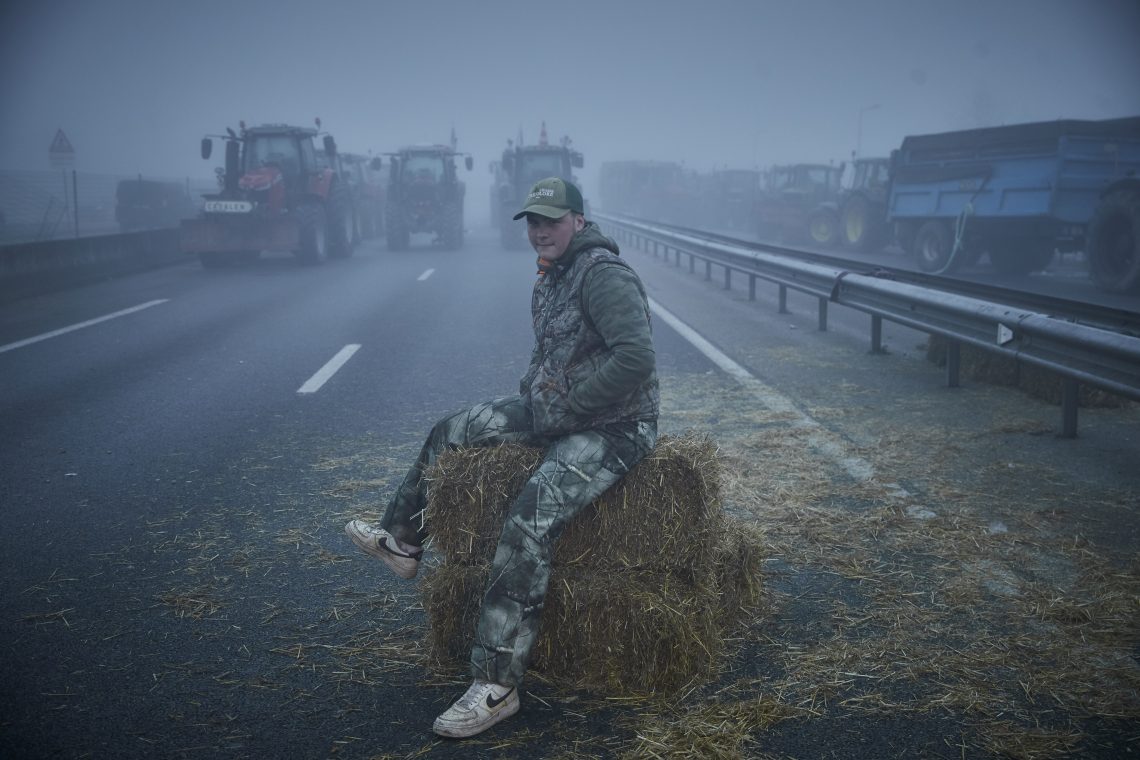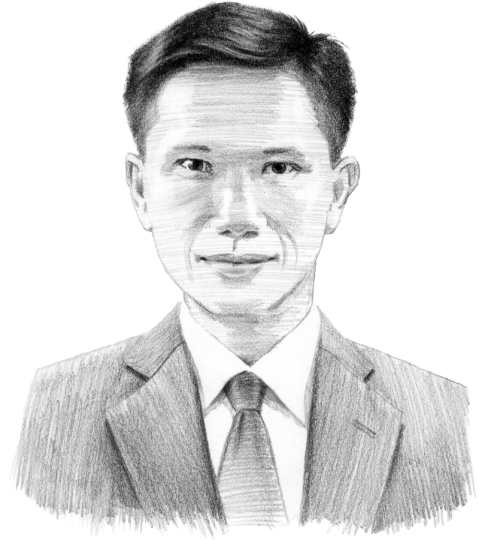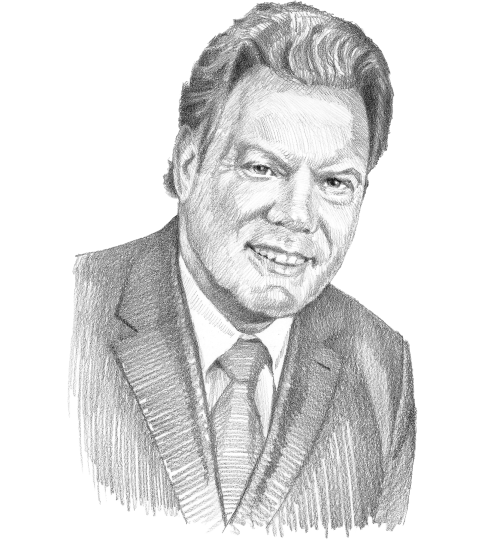The anatomy of the EU’s farm policy crisis
The EU’s common agricultural policy, which once gave rural communities a solid stake in the European project, has evolved in ways that many farmers find intolerable.

In a nutshell
- The EU’s storied farm support system is being loaded with new goals
- Brussels imposed ever stricter and costlier regulations on the farming sector
- Many farmers are alarmed as subsidies shrink and food markets open up
For more than a year in the Netherlands and Germany, and more recently in Poland, France, Belgium, Italy, Portugal, Spain, Greece and the Czech Republic, farmers have been busy setting road blockades and spreading manure in front of government buildings. The goal is to demonstrate their frustration over European Union policies. Brussels has responded meekly, backpedaling on some of the more controversial issues in the year of European Parliament elections. However, in the long run, the tension will not go away.
At the heart of this crisis is how the EU’s signature Common Agricultural Policy (CAP) has evolved since its inception in 1962: from an inclusive and generous farm support system operating inside the protected “fortress Europe” marketplace to today’s design of shrinking subsidies, rising costs, extensive red tape and bureaucrats nearly making production decisions on their own – and all that against the backdrop of the European single market opening to international agricultural trade.
Facts & figures
Agricultural policy’s shifting goals
- The way the European Commission describes it today, CAP is “a partnership between society and agriculture that ensures a stable supply of food, safeguards farmers’ income, protects the environment and keeps rural areas vibrant.”
- In 1962, the goals of Europe’s interventionist agriculture management were defined as: increasing farm productivity and food supply security and safety; promoting market stabilization (both in prices and quantities); and ensuring decent incomes for farmers and affordable food prices for European consumers.
The toolbox to achieve these goals included guaranteed prices (above global market levels) and regulations shielding the common market from imports. This setup created incentives for farmers to overproduce. Excess output was purchased by the European Economic Community (EEC, 1958-1993) and then its successor, the European Union, for future resale or destruction. When the stocked agricultural goods were sold outside the common market, the European producers were entitled to “export restitution” payments to compensate them for the lower prices abroad.
The CAP system quickly succeeded in reaching its initial objectives, but at a cost. In the 1960s and 1970s, price distortions led to excess production and new media headlines about “milk lakes,” “butter mountains” and “wine lakes” that often needed to be destroyed (after having been subsidized in the first place). Poorer non-European countries whose competitive edge is in farming, especially those in Africa, resented being barred from exporting to “fortress Europe.” Moreover, CAP’s productivity-oriented agricultural model intensified the use of synthetic fertilizers and pesticides and led to farmland consolidation – thus eliminating “hedges,” strips of land between arable plots with natural overgrowth, and other cultivation-free chunks of land. This has had health and environmental consequences, including the nutrient pollution of waters, soil exhaustion and declines in biodiversity.
While the EU decentralized CAP in some ways, its push for greener agriculture practices has intensified.
Aware of these challenges, the EEC began shifting its policy starting in the 1980s toward direct subsidies on a per-animal or per-hectare basis and to “diversification” obligations to lay land fallow. In the early 1990s, the closed common agro-market began to open to international competition, more in line with the General Agreement on Tariffs and Trade (GATT) goals. The milk quotas, for three decades the community’s main policy instrument in the milk sector, were abolished in 2015.
By the 2000s, the “decoupling” of subsidies from the quantities produced was completed. The aim was to align the farmers’ production strategies with market demand rather than the limits handed down by bureaucrats. Rural development policy was also introduced as the second pillar of CAP. While the EU decentralized CAP in some ways – member states acquired more say in the system in the 2010s and gained still more prerogatives under the 2023 reform (which some even called a “CAP decentralization”) – Brussels’ push for greener agriculture practices has intensified.
Farmers’ anger and desperation
The 2021-2027 funding period of CAP has a budget of 378.5 billion euros, roughly a quarter of which is earmarked for rural development. In 2021, the annual funding was 55 billion euros. The changes in rules during the last decades have reduced overall subsidies while introducing more stringent regulations and ecological constraints – all taking place while “fortress Europe” gradually opened its gates to agricultural imports.

As a result of this process, incomes have decreased, and working hours have reached unacceptable levels for many farmers. The resentment of growing inequality in the context of a rural-urban split is palpable.
The conditionality of CAP subsidies has led to a “command and control” decision-making system. Farmers are told what and when to sow and harvest, and they are subjected to navigating tedious red-tape reporting processes, not unlike other businesses in Europe. Many resent this as a violation of their freedom and dignity. The EU’s new climate regulations (the “European Green Deal,” the “Net Zero by 2050” program and the “Farm to Fork Strategy”) also push for less fertilizers and pesticides, laying land fallow and climate investment projects, which translate into greener, but slightly less productive agriculture.
Read more on EU policy dilemmas
- The future of food
- The ever-ambiguous European Union project
- Emmanuel Macron’s shrinking revolution
- France’s politics of mistrust
Some farmers see this as an attempt to reduce them to “gardeners of the countryside.” Farmers’ protests initially erupted in the Netherlands in 2023 over the new measures to reduce nitrogen pollution: CAP regulations are updated about every five years while farmers make capital investments for periods of 10 or 15 years. This mismatch creates uncertainty, especially for small farmers.
Farmers also point out the issue of rising costs. Energy and fertilizer prices – essential farming inputs – have increased sharply since Russia, the leading supplier of both, has been sanctioned over its invasion of Ukraine. In addition to that calamity, more frequent droughts and floods attributable to climate shifts have harmed plant cultures and harvests.
Small farmers resent their weak bargaining power even more in the face of a cartelized EU distribution structure that imposes lower prices for their products.
Given both the expensive “greener” direction of the policies and governments’ fiscal challenges, tax rebates or subsidies to farming fuel have been eliminated in countries like Germany or France. Price volatility, for input buyers and output sellers alike, is also more of a problem for small farmers.
Then comes the issue of unfair competition. Protesting farmers argue that producers outside Europe do not have to follow strict EU regulations and usually employ much less expensive labor, which gives them an insurmountable competitive edge in the common market. They oppose free trade deals, including the EU-Mercosur agreement. (In June 2013, the EU and four Mercosur states, Argentina, Brazil, Paraguay and Uruguay reached an ambitious and comprehensive free trade deal, but it has not been ratified by the EU Parliament or EU member states).
A particular problem has been the recent extension (until 2025) of the temporary suspension of import duties for agricultural goods from Ukraine – such as cereals, sugar, eggs and poultry – granted to support the country’s war effort. Street protests against this measure have been especially loud in Poland and the Czech Republic. In this context, small farmers resent their weak bargaining power even more in the face of a cartelized EU distribution structure that imposes lower prices for their products.
Contrary to what city dwellers may think, Europe is home to not one but several groups of farmers with diverse, often divergent, interests. Some sectors, like cereals, do well, while others, like cattle breeding, do not. Size also matters: just 20 percent of farmers in the EU own 83 percent of the land and receive 81 percent of the subsidies.
Example: France’s farming sector
France, the poster child of the CAP-driven agriculture (not least because it collects the largest single chunk of the system’s subsidies, at 17 percent in 2019), is a good place to look for clues on today’s farming industry key players.
One group comprises big farms. Given land consolidation and subsidies to increase productivity, large-area farms have emerged as a result of CAP. They are the winners of the existing setup, especially the cereal growers. This group’s umbrella organization, La Federation Nationale des Syndicats d’Exploitants Agricoles (FNSEA), is the biggest farming group in the country and has, in fact, co-managed the farm business with France’s agriculture ministry since the inception of CAP.
The French government was “taken by surprise” by the first wave of protests in January 2024, just as the FNSEA was trying to take credit for negotiating a deal on farm fuel taxes with the government.
Big farms have a vested interest in free trade as their members export a lot. They typically employ intensive production methods with heavy use of pesticides and fertilizers. For that, they are criticized by environmentalists and citizens who have to live with the consequences of, for example, nitrogen pollution or animal gut bacteria in waters close to industrial pig farms. They are somewhat critical of the new climate targets, the EU Green Deal and CO2-neutral policies.
The French government fears that farmers could shift even further to support Marine Le Pen’s National Rally radicals.
Most CAP money goes to this group: 20 percent of France’s biggest farmers receive 35 percent of EU subsidies. While the FNSEA praises the industrialized farm sector for its productivity and high added value, many criticize its alleged regulation and subsidies capture and cozy cooperation with the state, as illustrated this year by the police’s guarded response to the violence of protesting farmers.
Another group is the small, often heavily indebted, less productive farms operating within the conventional agricultural model. They, too, are often part of the FNSEA as they feel that is the only way they can be heard by the ministers and the EU. They also criticize the deluge of regulations and Brussels’ overreaching bureaucracy, including its mushrooming ecological constraints. They oppose the termination of the tax break on farm diesel. While this group does not receive the bulk of CAP subsidies, its members are nonetheless very dependent on them for their income. These subsidies represented more than half of their farms’ added value in 2021, compared to less than 20 percent for the largest farms.
Farmers in this bracket tend to oppose free trade. They perceive it as inconsistent that the EU imposes ever stricter norms on European farms while welcoming imported products that do not measure up to such norms – and can hardly be “CO2-neutral” given they are transported from faraway places. The small farms sector demands price floors to mitigate price volatility. It finds itself among the losers of globalization and asks for protectionism.
Both groups politically tend to be on the right. The French government fears that they could shift even further to support Marine Le Pen’s National Rally radicals, notably before the next European election in June 2024.
The crisis has induced an apparent 180-degree policy shift from “sustainability” to “food security and competitiveness” goals in CAP’s new Strategic Agenda for the next five years.
A third group consists of small, organic, “alternative” farms. Their operators promote environmental consciousness, agree with the Green Deal agenda and the Farm to Fork strategy, do not use pesticides and tend to be politically on the left. They, too, are critical of EU norms but for a different set of reasons: they see them as being too “centralized” and detached from the ecological needs of each local culture and soil, essentially, as not “green” enough. They advocate biodiversity and deconsolidation of farmland to reintroduce the hedges. They, too, criticize free trade and favor localism. Often members of the union Confederation Paysanne (Peasant Confederation), they discuss staging their own separate protests.
Despite their differing ideologies, both of those small groups find it hard to deal with big, often cartelized distributors and complain about the downward pressure on prices while their production costs have soared.
Scenarios
Given the magnitude of the farmers’ protests, the EU Commission caved on its climate targets for agriculture, on the pesticide reduction scheme and partly on Ukrainian imports. Fallow land requirements will also be suspended in 2024. Previously proposed soil and grassland regulations will be relaxed, and red tape will be simplified for small farms. In France, the government promised its farmers price floors, put the Ecophyto Plan on ice (it aimed to reduce pesticides) and officially opposed the current EU-Mercosur free trade talks.
Most likely: Tactical retreat away from new CAP goals
The crisis has induced an apparent 180-degree policy shift from “sustainability” to “food security and competitiveness” goals in CAP’s new Strategic Agenda for the next five years. Apparently, the European elections matter in the short term: fear of losing rural voters to the far-right seems to have incentivized change and new rhetoric of “dialogue” with angry farmers from President of the European Commission Ursula von der Leyen.
The shift toward competitiveness on climate and environmental goals now appears inevitable. However, although they are a minority, green groups and organic farmers following green and left politicians in April could initiate a counter-reaction. Their street protests would be on a smaller scale than those last winter but could receive quite a repressive response, given that most governments do not rely on those constituencies.
Another critical parameter will be the summer weather after the election. A strong El Niño phase in the Pacific Ocean will continue causing scorching heat waves across the globe, with dire consequences for farming. This may result in the climate issue coming back with a bang, strengthening the positions of greens and, paradoxically, causing new protests from all farmers for aid against climate disasters. That could conceivably revive the push for sustainability measures in the CAP.
Very likely: Setback for free trade
On the trade front, a renewed deal with Ukraine for tariff-free imports of farm products to the EU was agreed upon by the European Parliament in late April. Given pressures from France and Poland, it was reached only with the provision of an emergency brake if imported quantities prove high compared to 2021-2023. The idea is, of course, to prevent market distortions in the EU – and farmer protests. However, the downward pressure on agricultural goods prices is not only linked to Ukrainian production. Russia has leverage on world prices, too. Protests could, therefore, erupt despite the provision.
Regarding the EU-Mercosur pact, the quarter-of-a-century-discussed project has been put on hold. While Germany and Spain pushed to close the deal, others opposed it. During his visit to Brazil in March 2024, French President Emmanuel Macron described it as a “very bad deal” and called for a renewed deal with mirror clauses and that is more responsible on development, climate and biodiversity.
The arrangement will only be renegotiated after the June European legislature elections. If the political right succeeds, as is predicted at this point, the future trade pact with Mercosur may prove to be more about soothing European farmers’ rage than about the principle of free trade.
For industry-specific scenarios and bespoke geopolitical intelligence, contact us and we will provide you with more information about our advisory services.








